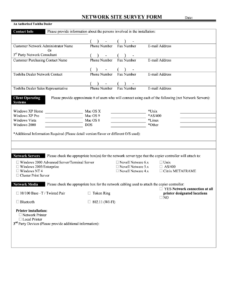Defining and implementing an effective IT security policy is a crucial step in safeguarding your organization’s sensitive data and ensuring the overall integrity of your IT infrastructure. A comprehensive security policy provides a clear roadmap for employees to follow, helping them understand their roles and responsibilities in protecting company assets. It also serves as a framework for making informed decisions regarding security measures and best practices.
Developing an IT security policy from scratch can be a daunting task, especially for organizations with limited resources or expertise. Fortunately, numerous free IT security policy templates are available online, providing a solid foundation for creating a customized policy that meets your specific requirements. These templates typically cover essential areas such as password management, data protection, access control, incident response, and acceptable use.
Understanding the Key Components of an IT Security Policy
Effective IT security policies typically include several key components that address various aspects of information security. These components provide a comprehensive framework for securing your organization’s IT infrastructure and data.
1. Policy Statement: The policy statement outlines the organization’s overall commitment to information security and provides a high-level overview of the policy’s objectives and scope.
2. Roles and Responsibilities: This section defines the roles and responsibilities of key personnel involved in implementing and enforcing the security policy. It clarifies who is accountable for specific security tasks, such as monitoring system logs, reviewing security logs, or responding to security incidents.
3. Acceptable Use: This section outlines the acceptable and prohibited uses of IT resources, including company-owned devices, email, internet access, and software. It sets clear boundaries for employees’ online activities and helps prevent misuse of company resources.
4. Security Measures: The policy should specify specific security measures that employees must follow to protect sensitive data and IT resources. These measures may include password management practices, data encryption, secure network configurations, and regular software updates.
Implementing and Maintaining an Effective IT Security Policy
Successfully implementing and maintaining an effective IT security policy requires continuous effort and dedication from all stakeholders. Here are some practical steps to ensure your policy remains effective:
1. Communicate the Policy Effectively: Communicate the IT security policy to all employees, contractors, and authorized users. Provide training sessions to help them understand the policy’s requirements and their individual responsibilities in maintaining IT security.
2. Regularly Review and Update the Policy: The IT landscape is constantly evolving, and new threats emerge frequently. Regularly review and update your IT security policy to ensure it remains relevant and effective against evolving threats and industry best practices.
3. Enforce the Policy Consistently: Consistent enforcement of the IT security policy is crucial for maintaining its effectiveness. Establish a clear process for addressing violations and ensure that consequences for non-compliance are clearly communicated and fairly applied.
4. Monitor and Evaluate Policy Effectiveness: Regularly monitor the effectiveness of your IT security policy by tracking security incidents, reviewing security logs, and conducting vulnerability assessments. This helps identify areas where the policy needs improvement or additional measures are required.
Conclusion
An effective IT security policy is a cornerstone of any organization’s cybersecurity strategy. By utilizing free IT security policy templates and following the outlined steps, organizations can establish a comprehensive framework for protecting their sensitive data, ensuring regulatory compliance, and minimizing the risk of security breaches. Remember, ongoing monitoring, review, and employee education are essential for maintaining a robust IT security posture and safeguarding your organization’s IT infrastructure.
The implementation of an IT security policy is a critical step toward achieving a secure and resilient IT environment. Encourage a culture of security awareness and responsibility among employees, and continuously adapt the policy to address evolving threats and industry best practices. By staying vigilant and proactive, organizations can effectively protect their valuable assets and maintain a strong defense against cyber threats.
FAQ
What is an IT security policy template free?
An IT security policy template free is a pre-defined document that provides a framework for creating an effective IT security policy. It covers essential areas such as password management, data protection, access control, incident response, and acceptable use.
Why is an IT security policy important?
An IT security policy is essential for safeguarding an organization’s sensitive data, ensuring compliance with regulations, and minimizing the risk of data breaches. It provides a clear roadmap for employees to follow, helping them understand their roles and responsibilities in protecting company assets.
How can I implement an IT security policy effectively?
Effectively implementing an IT security policy involves communicating the policy clearly to all stakeholders, providing adequate training, enforcing the policy consistently, and regularly reviewing and updating it to address evolving threats and industry best practices.
